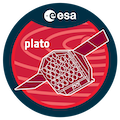Speaker
Description
The current catalog of more than 5000 confirmed exoplanets shows a great diversity of planetary systems: they differ greatly in their sizes, separations, masses, and stellar host characteristics. Transit surveys, including Kepler and TESS, unveiled a large population of small planets orbiting within 1 au of their host stars. By correcting for observational and survey biases, we can study the demographics of this population and constrain their formation and evolution mechanisms. Sub-Neptunes prove to be the most common type of planet in the galaxy, but without a solar system equivalent they have few compositional constraints. The demographic features that define this population are the radius valley and radius cliff, separating the sub-Neptunes population from the smaller super-Earths and larger Neptunes. Theoretical models of their atmospheric evolution can exactly reproduce the radius valley, but not the radius cliff. More precise information is needed about planet masses, insolations, and host star properties to explain the intrinsic population of our galaxy. There are many questions left to be answered about planets' compositions and formation and evolution history. The next generation of space telescopes, including Roman and PLATO, will have the capability to answer some of these questions.

